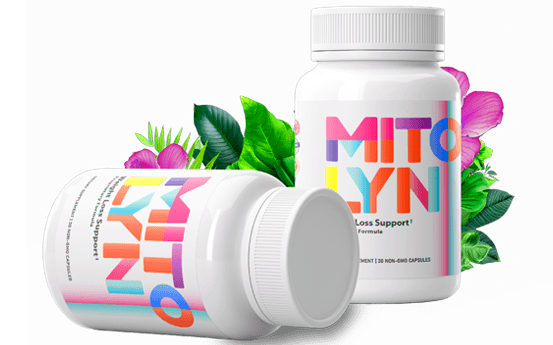What Types of Varicose Vein Treatments Are Covered by Insurance?
Varicose veins are a common condition that affects millions of people around the world. While they can be a cosmetic concern, varicose veins may also lead to discomfort, swelling, and more severe complications. For those seeking relief, understanding which types of varicose vein treatments are covered by insurance is essential to help manage both health and financial concerns. If you are wondering, “Are varicose veins covered by insurance?”, keep reading to learn more about your options.
Understanding Varicose Veins and Treatment Options
Varicose veins occur when the veins in the legs become enlarged and twisted. They are often a result of weak or damaged valves within the veins, leading to poor circulation. Common symptoms of varicose veins include aching, heaviness, and swelling in the legs. In some cases, the veins can become swollen and painful.
If you are experiencing symptoms of varicose veins, it is important to consult a vein treatment clinic to discuss your options. These clinics specialize in diagnosing and treating vascular conditions. Treatment options can range from conservative measures, such as compression stockings, to more invasive procedures, such as sclerotherapy, laser therapy, and vein stripping.
Are Varicose Veins Covered by Insurance?
Many people wonder whether varicose vein treatments are covered by insurance. The short answer is: it depends on the type of treatment and the insurance plan. Generally, most insurance companies are more likely to cover treatments that are considered medically necessary, as opposed to those deemed purely cosmetic. However, the specifics can vary based on your insurance provider, plan, and the severity of your condition.
Medically Necessary vs. Cosmetic Treatment
Insurance companies typically differentiate between treatments that are medically necessary and those that are cosmetic. Medically necessary treatments are those that aim to relieve symptoms or prevent further complications, such as pain, swelling, and ulcers. Cosmetic treatments, on the other hand, are typically focused on improving the appearance of varicose veins without addressing any underlying medical issues.
If your varicose veins are causing pain, swelling, or other health issues, your insurance may cover certain treatments. However, if your varicose veins are only a cosmetic concern, it may be more challenging to get coverage for treatment.
Common Varicose Vein Treatments Covered by Insurance
Several treatments for varicose veins may be covered by insurance, especially if your symptoms are severe or causing complications. Below are some of the most common treatments that insurance providers may cover.
- Sclerotherapy
Sclerotherapy is one of the most common treatments for varicose veins. It involves injecting a solution into the veins, which causes them to close off and eventually be reabsorbed by the body. This treatment is typically used for smaller varicose veins and spider veins.
Sclerotherapy is often covered by insurance when it is deemed medically necessary. For example, if the varicose veins are causing discomfort, swelling, or skin changes, your insurance may approve coverage for this procedure.
- Endovenous Laser Treatment (EVLT)
Endovenous laser treatment (EVLT) uses laser energy to seal off damaged veins. This minimally invasive procedure is typically used for larger varicose veins. During the treatment, a laser fiber is inserted into the vein through a small incision, and laser energy is applied to the vein walls, causing them to collapse and close.
EVLT is often considered a medically necessary procedure if your varicose veins are causing pain, swelling, or other complications. Many insurance providers will cover EVLT in such cases.
- Radiofrequency Ablation (RFA)
Radiofrequency ablation (RFA) is another minimally invasive treatment option for varicose veins. Similar to EVLT, RFA uses radiofrequency energy to heat and close off damaged veins. It is typically used for larger veins and has a high success rate in treating varicose veins.
If your varicose veins are causing symptoms such as leg pain or swelling, RFA may be covered by your insurance. Like EVLT, RFA is often deemed medically necessary when the veins are affecting your quality of life.
- Ambulatory Phlebectomy
Ambulatory phlebectomy is a procedure that involves removing varicose veins through small incisions in the skin. This treatment is typically used for veins that are too large to be treated with sclerotherapy or laser treatments.
If your varicose veins are causing symptoms such as pain or swelling, ambulatory phlebectomy may be covered by your insurance. Your vein treatment clinic will be able to help determine if this is the right treatment for you.
- Vein Stripping and Ligation
Vein stripping and ligation is a more invasive procedure that involves removing or tying off large varicose veins. This treatment is typically reserved for severe cases where other methods have not been effective.
Insurance is more likely to cover vein stripping and ligation if your varicose veins are causing significant medical issues, such as pain, swelling, or skin ulcers. This procedure may also be considered medically necessary if other treatments have not provided relief.
Factors Affecting Insurance Coverage for Varicose Vein Treatments
While the treatments listed above may be covered by insurance, several factors can influence whether or not your insurance provider will approve coverage. These factors include:
- Severity of Your Condition: If your varicose veins are causing pain, swelling, or other complications, your insurance provider is more likely to approve coverage for treatment.
- Documentation from Your Vein Treatment Clinic: Your vein treatment clinic will need to provide documentation of your condition, including any symptoms, test results, and treatment recommendations. This information helps your insurance provider assess the medical necessity of the treatment.
- Pre-Authorization Requirements: Some insurance providers may require pre-authorization before covering varicose vein treatments. This means that your doctor or vein treatment clinic will need to submit a request to your insurance provider for approval before proceeding with treatment.
- Your Insurance Plan: Different insurance plans have varying levels of coverage for varicose vein treatments. Some plans may have exclusions or limitations for vein treatments, while others may provide full coverage. It is important to check with your insurance provider to understand your specific plan’s coverage.
Conclusion: Speak to Your Vein Treatment Clinic About Insurance
If you are considering varicose vein treatment, it is essential to speak with a qualified vein treatment clinic about your options. They can help you understand which treatments may be covered by your insurance and guide you through the process of getting approval for treatment. Keep in mind that insurance coverage can vary based on the severity of your condition and the type of treatment you require.
If you are still wondering, “Are varicose veins covered by insurance?”, the answer largely depends on your individual situation. Consulting with a vein treatment clinic and your insurance provider is the best way to determine what treatments are covered and how you can proceed with managing your varicose veins.













